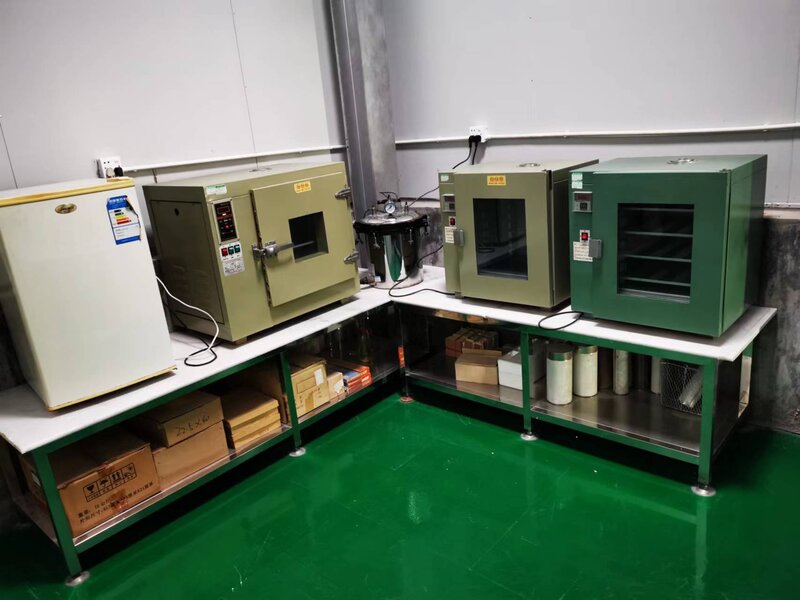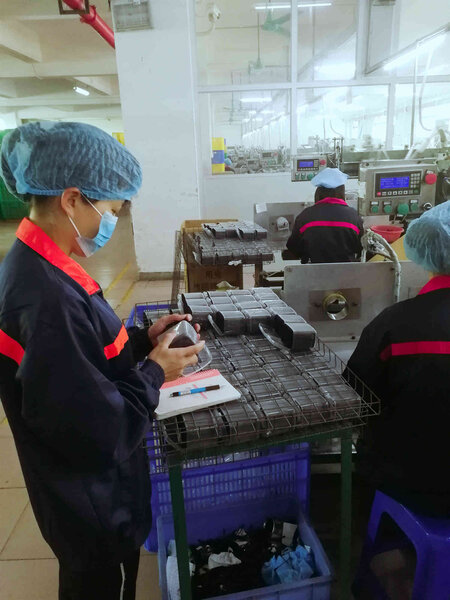Ever wondered how the humble cotton bud, a staple in every bathroom cabinet, comes to be? For private label buyers and aspiring manufacturers, understanding the cotton buds manufacturing process is more than just a matter of curiosity—it’s the key to ensuring quality, cost-effectiveness, and brand integrity. The journey from raw cotton to a perfectly formed swab is a fascinating blend of precision engineering and material science that involves sophisticated cotton bud making machines and strict quality control measures.
Why Understanding Cotton Swab Manufacturing Matters
The global cotton swab market is worth billions of dollars, with demand continuing to grow across medical, cosmetic, and household applications. However, not all cotton swabs are created equal. A deep dive into the cotton swab production process reveals the critical factors that separate premium products from inferior alternatives. Whether you’re a private label buyer seeking reliable suppliers or an entrepreneur planning to enter the market, understanding these manufacturing intricacies is essential for success.
What You’ll Learn in This Complete Guide
This comprehensive guide will walk you through the entire manufacturing journey, from the selection of raw materials to the final packaged product. We’ll explore the machinery that makes it all possible and give you an inside look at how SwabMasters has perfected each step of the cotton buds manufacturing process. So, if you’ve ever asked, “How to make cotton buds?”—you’re in the right place.
Here’s what we’ll cover:
- The Essential Materials Behind a Quality Swab
- A Step-by-Step Look at the Manufacturing Process
- The Machinery That Drives Production
- SwabMasters’ Commitment to Excellence
- How to Start Your Own Cotton Swab Brand
Materials Used: The Building Blocks of a Perfect Cotton Bud
The quality of a cotton bud is determined long before it hits the production line. It all starts with the raw materials. Choosing the right components is crucial for creating a product that is safe, effective, and reliable. Here are the three primary materials that go into the cotton buds manufacturing process.
1. High-Quality Cotton
The heart of any cotton swab is, of course, the cotton. At SwabMasters, we use 100% pure, premium-grade cotton. Unlike manufacturers who might use synthetic blends to cut costs, we believe that pure cotton offers superior absorbency, softness, and performance. Our cotton is sourced from top global suppliers and is free from bleaching agents and impurities, ensuring a hypoallergenic and lint-free product.

Alt text: High-quality raw cotton fiber, the primary material for the cotton buds manufacturing process.
2. The Stick: Plastic, Paper, or Bamboo?
The stick, or spindle, provides the structural backbone of the cotton swab. The choice of material depends on the intended application and target market. Each has its own unique benefits:
- Plastic Sticks: These are the most common type, known for their flexibility and durability. They are ideal for a wide range of applications, from personal care to industrial use.
- Paper Sticks: An eco-friendly alternative, paper sticks are biodegradable and offer a good balance of strength and flexibility. They are becoming increasingly popular with environmentally conscious consumers.
- Bamboo Sticks: For a premium, sustainable option, bamboo is an excellent choice. It’s a highly renewable resource that offers superior strength and a natural aesthetic.

Alt text: A collection of plastic, paper, and bamboo sticks used in the cotton swab production line.
3. The Adhesive
A small but critical component, the adhesive is what binds the cotton to the stick. A high-quality, medical-grade adhesive is essential to ensure that the cotton tip remains securely attached, even during vigorous use. This is a crucial safety feature, as a detached cotton tip can be a serious hazard. We use a specialized adhesive that creates a bond with a strength exceeding 30 Newtons, far surpassing industry standards.
The Manufacturing Process Explained: From Raw Material to Finished Product
Now that we’ve covered the materials, let’s dive into the step-by-step cotton swab production process. This is where the magic happens, transforming simple raw materials into a precisely engineered product. The entire process is automated, using a sophisticated cotton bud making machine to ensure consistency and efficiency.
Step 1: Cotton Sliver Preparation
The first step is to prepare the cotton. Raw cotton is fed into a carding machine, which separates, cleans, and aligns the fibers to create a continuous, untwisted rope called a “sliver.” This is a critical step, as the quality of the sliver directly impacts the uniformity and performance of the final cotton bud. At SwabMasters, our in-house cotton sliver production gives us complete control over this process, allowing us to create a sliver that is perfectly optimized for our production line.

Alt text: Cotton sliver preparation, a key step in the cotton buds manufacturing process.
Step 2: Stick Feeding and Shaping
Next, the sticks are loaded into a hopper, which feeds them one by one onto a conveyor. As the sticks move along the line, they are precisely shaped and cut to the desired length. If paper sticks are being used, they are tightly rolled and compressed to ensure the right level of rigidity.
Step 3: Bud Forming and Rolling
This is where the cotton and stick come together. The end of each stick is coated with a precise amount of adhesive. Then, the cotton sliver is fed onto the stick and tightly wound around the end by a high-speed spinning mechanism. The amount of cotton applied is carefully controlled to ensure a consistent size and shape. A rotating blade then cuts the cotton, and the process is repeated on the other end of the stick.

Alt text: A close-up of a cotton bud making machine forming and rolling the cotton tip.
Step 4: Drying and Sterilizing
Once the buds are formed, they pass through a drying tunnel to remove any moisture and set the adhesive. This is a crucial step for preventing mildew and ensuring the longevity of the product. For medical-grade swabs, an additional sterilization step is required. This is typically done using ethylene oxide (EO) or gamma irradiation to ensure that the swabs are completely free of any microorganisms.

Alt text: A dry heat sterilization machine used in the cotton swab production line for medical applications.
Step 5: Packing and Labeling
The final step is packaging. The finished cotton buds are counted and sorted by an automated system and then fed into their final packaging. This could be a plastic blister pack, a paper box, or a resealable bag. The packages are then sealed, labeled, and packed into larger cartons, ready for shipping.

Alt text: A variety of packaging options for finished cotton swabs, the final step in the manufacturing process.
Required Machinery Overview: The Heart of the Production Line
A modern cotton swab production line is a marvel of automation. It consists of several key pieces of machinery working in perfect harmony to produce thousands of high-quality cotton buds every minute. Here’s a quick overview of the essential equipment:
- Cotton Carding Machine: Prepares the raw cotton into a uniform sliver.
- Stick Making Machine: Creates the plastic, paper, or bamboo sticks.
- Cotton Bud Making Machine: The main workhorse of the production line, this machine combines the cotton and sticks to form the finished buds.
- Drying Tunnel: Removes moisture and sets the adhesive.
- Sterilization Equipment: (For medical-grade swabs) Ensures the product is sterile.
- Automated Packaging Machine: Counts, sorts, and packages the finished swabs.
Investing in a high-quality cotton bud making machine is the single most important factor in ensuring a successful and efficient production line. These machines are designed for high-speed, continuous operation and can be customized to produce a wide variety of swab types and sizes.

Alt text: An overview of a complete cotton bud production line, showcasing the various machines involved in the process.
SwabMasters’ Manufacturing Capabilities
SwabMasters specializes in high-quality cotton swab production with state-of-the-art facilities and vertically integrated processes. We offer comprehensive OEM/ODM services including custom materials (plastic, paper, bamboo sticks), various shapes and sizes, and flexible packaging options.
Ready to start your own cotton swab brand? Contact SwabMasters today for OEM/ODM services and get your free quote.
Quality Control and Technical Specifications
The difference between a premium cotton swab and a substandard one comes down to quality control measures implemented throughout the cotton swab production process. Professional manufacturers employ multiple quality checkpoints to ensure consistency and safety.
Cotton Tip Adhesion Strength: The bond between cotton and stick must exceed 30 Newtons to prevent dangerous tip detachment. Cotton Density: Each cotton tip must contain precisely 0.05-0.1 grams of cotton, distributed evenly around the stick end. Sterility Standards: Medical-grade cotton swabs must meet strict sterility requirements, achieving a Sterility Assurance Level (SAL) of 10^-6.

Alt text: Quality control testing ensures cotton swab manufacturing meets strict safety and performance standards.
Modern cotton bud making machines incorporate sophisticated features with production capabilities reaching 3,000 pieces per minute while maintaining consistent quality. Real-time monitoring systems detect defects instantly, automatically ejecting substandard products before packaging.
Environmental Considerations and Manufacturing Efficiency
Sustainability has become increasingly important in the cotton buds manufacturing process. Modern facilities implement eco-friendly practices including waste reduction through advanced cutting systems that minimize cotton waste, energy-efficient drying tunnels with heat recovery systems, and sustainable materials like paper and bamboo sticks.
Common manufacturing challenges include cotton tip irregularities (usually caused by inconsistent cotton sliver quality), adhesion problems (often from contaminated surfaces), and production speed variations (indicating equipment wear). Regular maintenance and quality sourcing prevent most issues.
Cost Analysis and Investment Considerations
Understanding the economics of cotton swab production is crucial for market entry. A basic cotton bud making machine starts around $50,000, while fully automated lines can exceed $500,000. Key cost factors include production speed, automation level, and customization capabilities.
Operating costs: cotton represents 30-40% of production costs, sticks account for 20-25%, with adhesive and packaging making up the remainder. Modern automated lines require minimal direct labor.
Market Applications and Future Trends
The cotton buds manufacturing process serves diverse markets including medical/healthcare, cosmetic/personal care, and industrial applications. Each segment has specific requirements for quality, materials, and packaging.
Future trends include increased demand for biodegradable materials, smart manufacturing with IoT integration, and growing customization requirements. These trends drive innovation in both materials and manufacturing processes.
Conclusion: Mastering Cotton Swab Manufacturing
The cotton buds manufacturing process represents a perfect blend of traditional materials and modern technology. Success requires understanding every aspect, from raw material selection to final packaging. Quality control, efficient machinery, and attention to detail separate professional manufacturers from amateur operations.
For businesses considering entry into this market, partnering with experienced manufacturers like SwabMasters provides access to proven processes, quality systems, and market expertise. Whether you’re developing a new brand or improving existing products, understanding these manufacturing fundamentals ensures informed decisions that lead to market success.


